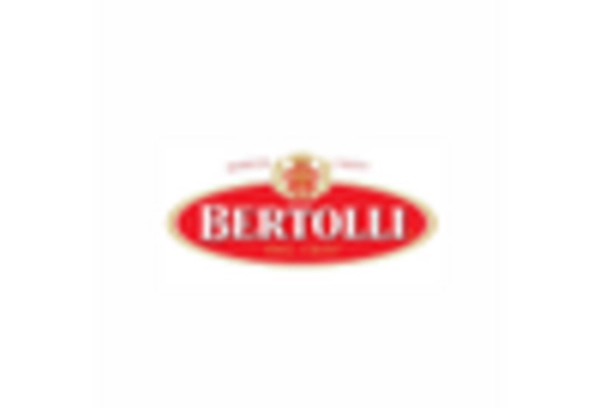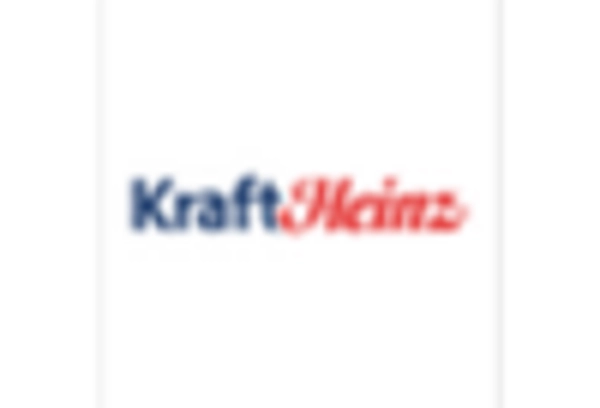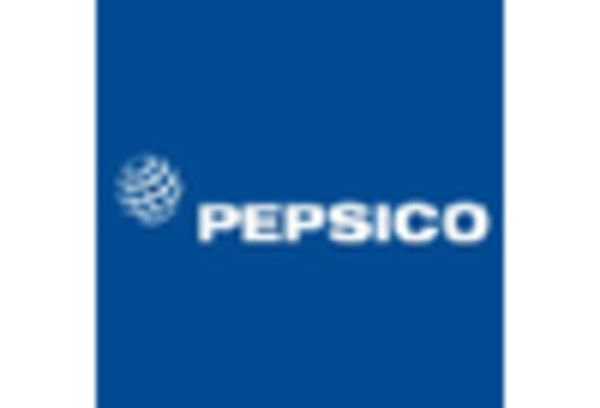Increased Focus on Nutritional Value
As health awareness continues to rise among consumers, the food spreads market is adapting to meet the demand for products with enhanced nutritional profiles. Consumers are increasingly scrutinizing ingredient lists and seeking spreads that offer functional benefits, such as added vitamins, minerals, and healthy fats. In 2025, it is projected that the market for functional foods in the US will reach $275 billion, indicating a strong consumer preference for health-oriented products. This trend is prompting manufacturers to reformulate existing products and develop new spreads that align with health trends, such as low-sugar, high-protein, and fortified options. The food spreads market is likely to evolve as brands prioritize nutritional value, catering to health-conscious consumers who are looking for products that support their wellness goals.
Convenience and On-the-Go Consumption
The fast-paced lifestyle of consumers in the US is contributing to the growth of the food spreads market, as convenience becomes a key factor in purchasing decisions. Busy individuals are increasingly seeking quick and easy meal solutions, leading to a rise in demand for ready-to-eat spreads that can be easily incorporated into meals or snacks. In 2025, it is estimated that the convenience food sector will account for over 30% of total food sales in the US. This trend is prompting manufacturers to develop single-serve packaging and innovative spread options that cater to on-the-go consumption. the food spreads market will benefit from this shift, as brands focus on creating products that align with the needs of time-strapped consumers, thereby enhancing their market presence and appeal.
Rising Demand for Plant-Based Options
the food spreads market is shifting notably towards plant-based alternatives, driven by increasing consumer awareness regarding health and environmental sustainability. As more individuals adopt vegetarian and vegan diets, the demand for spreads made from nuts, seeds, and legumes is on the rise. In 2025, plant-based food sales in the US are projected to reach approximately $74 billion, indicating a robust growth trajectory. This trend is likely to influence the food spreads market, as consumers seek healthier and more sustainable options. The industry is responding by innovating and expanding product lines to include a variety of plant-based spreads, catering to diverse dietary preferences. This shift not only reflects changing consumer habits but also suggests a potential for significant market growth as more brands enter the plant-based segment.
E-commerce Growth and Digital Marketing Strategies
The food spreads market is experiencing a transformation due to the rapid growth of e-commerce and digital marketing strategies. As more consumers turn to online shopping for convenience, brands are increasingly investing in digital platforms to reach their target audiences. In 2025, online grocery sales in the US are projected to exceed $100 billion, highlighting the importance of e-commerce in the food industry. This shift is encouraging food spreads manufacturers to enhance their online presence and engage consumers through targeted marketing campaigns. The food spreads market is likely to benefit from this trend, as brands leverage social media and e-commerce platforms to promote their products, ultimately expanding their reach and driving sales in a competitive landscape.
Growing Interest in Gourmet and Artisanal Products
The food spreads market is witnessing a surge in interest for gourmet and artisanal products, as consumers increasingly seek unique and high-quality options. This trend is driven by a desire for authentic flavors and premium ingredients, with many consumers willing to pay a premium for artisanal spreads that offer distinctive taste experiences. In 2025, the gourmet food segment is expected to grow by approximately 10% annually, reflecting a broader trend towards premiumization in the food industry. As a result, brands are focusing on small-batch production and sourcing high-quality ingredients to meet this demand. the food spreads market will see an influx of innovative flavors and artisanal offerings, appealing to discerning consumers who prioritize quality and craftsmanship in their food choices.

















Leave a Comment